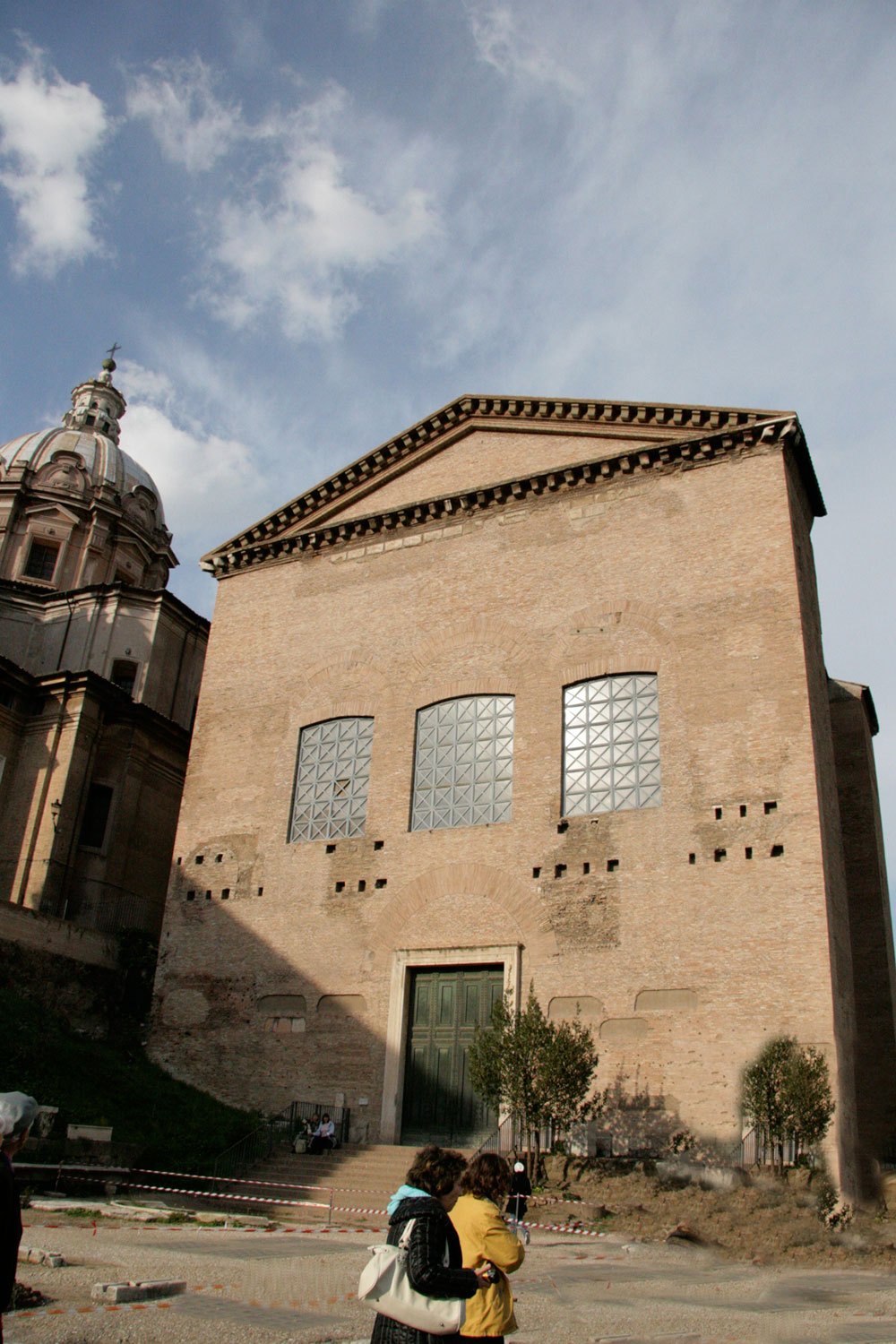Roman Building Projects
A Marker of Social Organization and Military Success
Republic
Curia (Senate House: Hostilia, Cornelia, Julia)
- The word “Curia” originally meant a subdivision of the Roman population. It was divided into 30 curiae. Later, the term came to designate a place of assembly, where decisions were made
- More specifically, it was also applied to a particular building in the forum where the Roman Senate met. The first curia reaches back to the archaic period. The last renovation of the Curia took place 1,000 years later, during the Dominate, when Constantinople was the new capital city of the empire and Rome was a regional urbs
Curia Hostilia
- The forum floor was paved around 600 BC. There was a major fire around 580 BC, which destroyed the Regia and House of the Vestals as well as buildings on the other side of the forum. The pavement was redone and the first Curia Hostilia is thought to have been built by Tullus Hostilius, the third king of Rome. It housed the Roman Senate, which at that time was the advisory body to the king
Curia Cornelia
- In the first century BC, Sulla, as Dictator, expanded the Senate rolls. As a result, the Senate outgrew its home in the Curia Hostilia. This building was demolished and replaced by a larger Senate building, the Curia Cornelia
Curia Julia
- The Curia building was undertaken by Julius Caesar in 44 BC as a replacement for the Sullan Curia Cornelia. It was completed, and later restored during the Principate, first by Augustus (28 BC), then by Domitian (81-96 AD), and much later, during the Dominate, by Diocletian (284-305 AD). The building was restored again by the Urban Prefect Annius Eucharius Epiphanius in 412 AD.
This is the Senate building as it looks today. This building was begun by Julius Caesar in 44 BC and finished by Augustus in 28 BC. It was renovated by Domitian 81-96 AD, again by Diocletian 284-305 AD, and restored again by the Urban Prefect Annius Eucharius Epiphanius in 412 AD.
Political and military implications
- Augury was an integral part of any action taken
- The symbolism implied that the gods and the elite of the city deliberated on various matters of importance to the community
- There were palladia, mostly related to lightning striking the ground; fig tree, wellhead
- The importance of the Comitium suggests that the King was not an absolute ruler but responsive to the Senate (Curia) and to the people (Comitium)
- Horatius Cocles was honored in the Comitium by having a statue erected; he saved the city from enemy attack by defending a bridge over the Tiber while his colleagues destroyed it as he blocked the advance of the enemy

